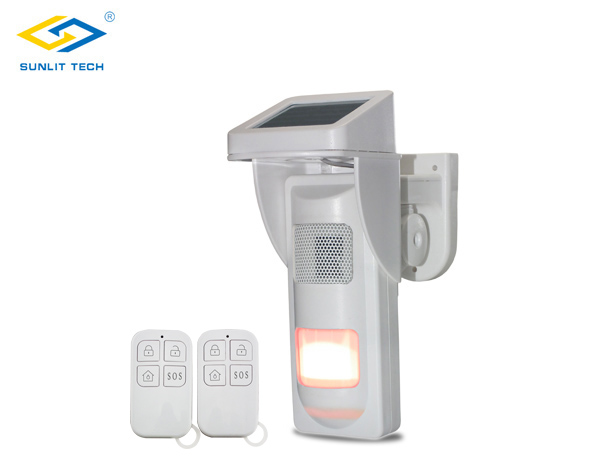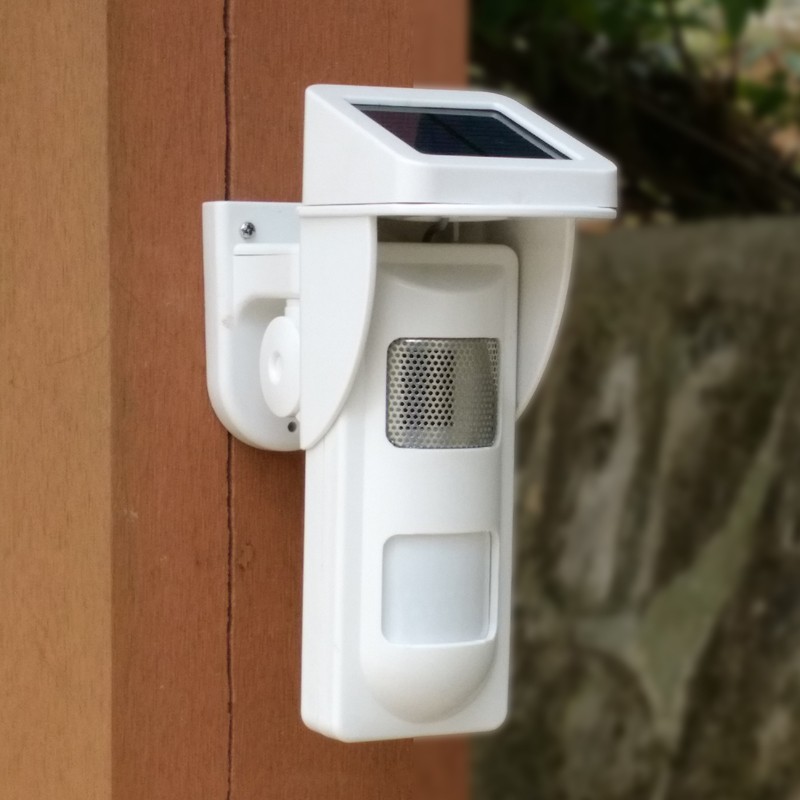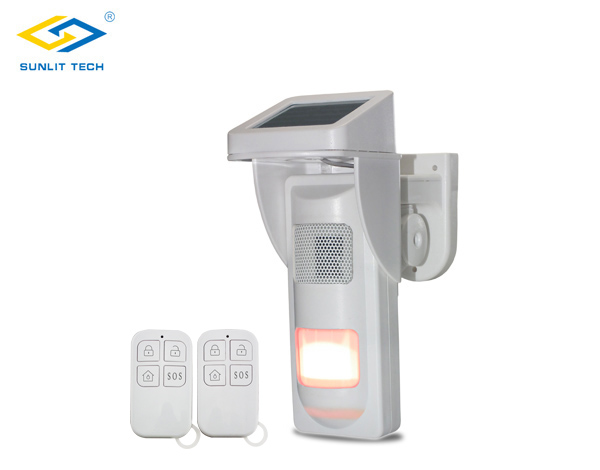How Do Wireless PIR Detectors Enhance Outdoor Surveillance?
In modern security systems, wireless PIR detectors play a crucial role in enhancing outdoor surveillance. These motion-sensing devices use passive infrared (PIR) technology to detect movement by sensing heat signatures, making them highly effective for monitoring outdoor spaces such as driveways, perimeters, and entry points. Unlike traditional wired sensors, wireless PIR detectors offer flexibility, ease of installation, and seamless integration with smart security systems. This article explores the advantages of these devices and how they significantly improve outdoor security monitoring.

How Wireless PIR Detectors Work
Wireless PIR detectors operate by detecting infrared radiation emitted by objects, particularly humans and animals. When a significant temperature change occurs within the sensor's detection range, the system triggers an alert, notifying homeowners or security personnel. The wireless connectivity allows these detectors to communicate with alarm systems, smart home hubs, or security cameras without the need for extensive wiring, making them ideal for outdoor applications.
Advantages of Wireless PIR Detectors for Outdoor Surveillance
1. Enhanced Perimeter Protection
Wireless PIR detectors provide an additional layer of security by monitoring outdoor areas before intruders reach the main building. By detecting movement in real time, they help deter potential threats and allow early intervention.
2. Flexible Installation and Coverage
Without the need for extensive wiring, wireless PIR motion sensors can be installed in strategic locations such as fences, gardens, driveways, and parking lots. They can be repositioned easily to adapt to changing security needs.
3. Smart Integration with Security Systems
Modern wireless PIR detectors integrate with outdoor security cameras, smart alarms, and home automation systems, enabling remote monitoring through mobile applications. This integration enhances real-time surveillance and ensures immediate action can be taken when motion is detected.
4. Reduced False Alarms with Advanced Filtering
High-quality wireless outdoor PIR detectors use advanced algorithms to differentiate between human movement and environmental factors such as wind-blown debris, animals, or shadows. This reduces false alarms and improves system reliability.
5. Weatherproof and Durable Design
Outdoor wireless PIR motion detectors are built to withstand harsh environmental conditions, including rain, snow, and extreme temperatures. Their IP-rated waterproof housing ensures long-term durability and consistent performance in all seasons.
6. Battery Efficiency and Low Maintenance
Most wireless PIR detectors operate on long-lasting batteries, reducing the need for frequent maintenance. Some models come with energy-saving modes, extending battery life and making them ideal for remote locations without a direct power source.

Best Applications for Wireless PIR Detectors
Residential security: Protecting homes, driveways, and gardens from unauthorized access.
Commercial and industrial sites: Securing warehouses, parking lots, and construction sites.
Perimeter monitoring: Providing early intrusion detection for large properties.
Remote locations: Enhancing security in farms, cabins, and off-grid properties.
FAQ:
1. Can wireless PIR detectors work at night?
Yes, most wireless outdoor PIR detectors come with infrared night vision technology, allowing them to detect motion even in complete darkness.
2. Do wireless PIR detectors need Wi-Fi to function?
Not necessarily. While some advanced models integrate with Wi-Fi-based security systems, most operate on radio frequency (RF) communication to transmit alerts to a receiver or control panel.
3. How far can wireless PIR detectors detect movement?
Detection ranges vary by model, but most wireless PIR sensors can detect motion between 30 to 50 feet (9-15 meters) with a 120-180° field of view.
4. Are wireless PIR detectors pet-friendly?
Yes, many models have pet-immune technology that ignores movement from small animals to reduce false alarms.
5. How do I maintain my wireless PIR detector?
Regularly clean the sensor lens, check battery levels, and ensure the device is positioned correctly to avoid interference from direct sunlight or reflective surfaces.
Conclusion:
Wireless PIR detectors significantly enhance outdoor surveillance by providing real-time motion detection, flexible installation, and seamless integration with smart security systems. With features like weatherproof design, low power consumption, and advanced motion filtering, they are an essential component of modern security solutions for both residential and commercial properties. Whether used for home security, perimeter monitoring, or industrial protection, wireless PIR detectors offer a reliable and efficient way to safeguard outdoor spaces.
wireless PIR detectors wireless outdoor PIR detectors wireless PIR motion sensors
 简体中文
简体中文


